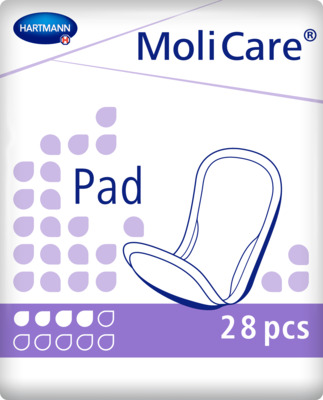Incontinence Advice
Bladder Training: How to Perform Urine Retention Techniques
Are you often racing to the toilet? Bladder training might just be the breakthrough you need. Learn how to train your bladder with these effective urine retention techniques now. Bladder training is an effective way to manage various forms of urinary incontinence, from stress leaks when coughing or sneezing to the urgent rushes that catch you off-guard. In this article, we will explore effective bladder training, the science behind it, and practical tips to ensure that you regain control over your bladder rather than your bladder having control over you! Whether you're dealing with occasional leaks or frequent urination, there’s a pathway to improvement. Key points: Understand what bladder training involves and its benefits for urinary control. Discover exercises and techniques such as Kegel exercises and scheduled toilet trips. Learn how to integrate dietary changes and weight management for better bladder health. Identify when to consider medical interventions or seek professional advice. Gain insights into maintaining progress and managing expectations with bladder training. Explore how HARTMANN Direct can help with high-quality incontinence pads.

What is bladder training?
The aim of bladder training is to improve bladder control and to enable the bladder to hold on to a larger volume of urine for a longer period of time. It can also be about training your mind and not just your bladder, even though you shouldn’t hold urine for too long; sometimes people get into the habit of going too often “just in case.”
Over time, this can disrupt the normal functioning of the bladder, leading to the bladder only being able to hold on to a reduced capacity of urine and weakened pelvic floor muscles.
Bladder training is usually carried out by gradually extending the time between toilet visits.
This technique can help to manage urinary incontinence. This technique is especially beneficial for those experiencing stress incontinence – where activities like coughing or lifting can trigger leakage (see urine leakage when coughing for more details) – and urge incontinence, which involves sudden, intense urges to urinate that are difficult to control.
According to NHS guidelines, bladder training involves gradually increasing the intervals between using the toilet, using controlled breathing or distraction techniques to manage urges, and setting a schedule to visit the restroom.
Bladder Training: How to Perform Urine Retention Techniques
Is bladder training suitable for everyone?
Bladder training is a versatile method that is effective for improving various types of incontinence types, including stress, urge, and mixed incontinence. It can also be helpful for men and women of all ages. Likewise, addressing bladder training for men with exercises that strengthen the pelvic muscles, which are crucial for urinary control. It is important to gain advice from a healthcare professional if you have a condition that could make it difficult for you to perform bladder training.
In this case, your GP may refer you to a specialist who can provide tailored advice and a personalised programme of bladder training. They may also suggest other solutions to manage your symptoms, such as medications or medical devices to help manage incontinence more effectively.
What are the benefits of bladder training?
Bladder training offers several significant advantages:
Extended time between toilet visits: Through consistent training, you can increase the intervals between trips to the toilet, allowing for greater freedom and less disruption throughout the day.
Increased bladder capacity: Over time, bladder training exercises can help expand the volume of urine your bladder can comfortably hold
Better urge control: Learn to suppress sudden urges, gaining more control over when and where you visit the toilet.

Bladder training technique
To begin bladder retraining effectively, consider the following steps:
- Consultation with a healthcare provider: Before starting, it’s crucial to discuss your symptoms with a healthcare professional who can tailor a bladder training program specific to your needs. This is especially important if you have a condition that could make bladder training or pelvic floor exercises difficult; for example, pelvic floor dysfunction caused by pregnancy or childbirth. In this case, your GP may refer you to a specialist physiotherapist for a personalised treatment plan.
- Maintaining a bladder diary: This helps to identify current urinating frequency and can be used to measure the effects of bladder training on urine frequency over time. It is also important to identify urinating habits; for example, many people can get into the habit of going too often. Identifying these habits and making practical changes is important. This diary should include times of urination, the amount (for example, a bladder full or a tiny dribble) and instances of incontinence.
- Gradual extension of urination intervals: Start by slightly delaying your trip to the toilet by a few minutes when you feel the urge to go. For example, if your bladder diary shows you go every 30 minutes, gradually extend this time by 5 to 10 minutes, and continue this for a week. If successful, try extending the time further for another week. After a period of time, your bladder capacity will increase, and you may be able to extend the interval by 30 minutes or more. The aim is to have three to four hours between toilet visits. It is not necessary to have an interval between visiting the toilet longer than this. Techniques such as deep breathing and focusing on other tasks can help divert attention from the urge to urinate.
- Pelvic floor exercises: Also known as Kegel exercises, complement bladder training as they strengthen the muscles that support the bladder and control urine flow. Combining bladder training with regular pelvic floor exercises can provide significant improvement, especially for cases of mixed incontinence. These exercises, which involve squeezing and releasing the pelvic floor muscles, strengthen the pelvic floor muscles. They are simple yet effective and can be performed discreetly at any time and place. While initially designed for women, these exercises are also incredibly beneficial for men. For more information, see our Kegel exercises for men guide.

How long does bladder training take?
While it’s natural to anticipate immediate results, bladder training typically requires six to twelve weeks to take effect. Patience during this period is crucial. If you are still experiencing strong urges to pass urine or have some episodes of incontinence after starting bladder training, try looking back in your bladder diary to see how much progress you have made so far.
If, after several weeks, you don’t notice any progress at all with bladder training, it’s important to consult with a healthcare professional, as alternative treatments, including medications or surgical options, might be necessary to address your condition effectively.
Lifestyle considerations
Don’t forget, there are other ways to help your bladder, which include:
Diet: Your diet plays a crucial role in managing incontinence. Consider avoiding irritants like caffeine, acidic foods, and alcohol, which can affect the bladder. Instead, include a mix of soluble fibre (such as oats, barley, berries, and fruits) and insoluble fibre (found in whole grains, vegetables and nuts) and incorporate these across your three daily meals. These fibres help maintain bowel regularity and prevent constipation, as well as consuming 6-8 cups of water per day (1-2 litres).
To learn more, check out our active living section, with dedicated articles about foods and drinks that irritate the bladder,bladder-friendly drinks and more.
Prevent constipation: Avoiding constipation is crucial for successful bladder training, as bowel function can also impact how your bladder functions. When the bowel is full, it can press against the bladder and aggravate symptoms of urinary incontinence.
Weight: Being overweight can put pressure on the pelvic floor muscles, worsening incontinence. Losing weight through healthy eating and regular exercise can significantly benefit bladder control.
Limit fluid intake before bed: Reducing fluid consumption before bedtime can help lessen the likelihood of nighttime incontinence.
How HARTMANN Direct UK and MoliCare can help
Our products can help to support your bladder training journey. From comfortable incontinence products for day and night to a range of sizes for male incontinence products and female incontinence products, we are here to assist you every step of the way regarding bladder training and incontinence issues. By integrating our solutions, you can improve the effectiveness of your bladder training regimen and achieve better control faster.
In conclusion, bladder training offers a promising solution for improving bladder control and managing urinary incontinence. By adopting techniques like Kegel exercises, scheduled toilet trips, and maintaining dietary health, individuals can extend the time between toilet visits, increase bladder capacity, and gain control over urinary urges. While results may take time to become apparent, consistent practice and consultation with healthcare providers can lead to significant improvements and a better quality of life.
FAQs
Is bladder training good for you?
Bladder training is beneficial as it helps improve bladder control and reduces the frequency and urgency of urination. It is especially useful for individuals experiencing urinary incontinence or an overactive bladder.
How much fluid can a bladder hold?
The bladder acts as a storage tank, which expands on filling, like a balloon. A normal bladder in a healthy adult can comfortably hold a pint (500mls) of urine. You can use a jug to measure your urine. Ideally, the bladder should be emptied for three to four hours. This also depends on how much you drink and your bladder capacity.
Is it good practice to hold on to your urine?
Practising holding on to your urine can be useful in bladder training to improve urinary control. Consistently holding urine for too long or ignoring the urge to urinate can increase the risk of bladder infections or other complications. However, when bladder training, it is not necessary to hold on to urine longer than a normal three to four-hour interval, as the aim is to work towards a normal interval in between visiting the toilet, as opposed to going too frequently.
Sources
NHS. (2024) Homepage. [online] Available at: https://www.nhs.uk/ [accessed 01/08/24]

MoliCare® Premium Lady Pad 2 Drops
<h2>Skin Friendly Pant Liners</h2> <p>For women that experience slight incontinence and bladder weakness, across different age groups, it can be a challenge to find the right bladder weakness product that is easy to apply and wear without the worry of potential leakages. Fortunately, we understand this approach, hence why we are happy to offer our MoliCare® Premium Lady Pad 2 drops, that is skin-friendly, Aloe Vera applied, and comes with 14 liners per bag.</p> <h2>Slim and discreet liners</h2> <p>Whether dealing with stress incontinence or urge incontinence, these panty liners offer a discreet and easy solution on the go. Simply place the pad in your underwear and secure it with the adhesive strip for all-round protection. Available in different absorbency levels, MoliCare® bladder weakness products cater to all levels of bladder weakness, ensuring secure care.</p> <h2>Control Bladder Weakness</h2> <p>Enjoy the benefits of these body-shaped absorbent panty liners, designed for women with bladder weakness. The pads offer discreet, reliable protection with features including odour control and fast absorption.</p> <p>With a wide adhesive strip, you can comfortably fix the pad in your regular underwear, providing secure and comfortable fixation. The pads are skin-friendly, featuring soft, breathable materials, including foam cuffs, and a top sheet treated with Aloe Vera.</p> <p>Keeping your skin healthy is a priority, which is why MoliCare® Premium Lady Pads have a skin-neutral pH value of 5.5 and an antibacterial finish. They are also dermatologically tested, offering peace of mind.</p> <h2>Buy pant liners online</h2> <p>Never worry about running out with our convenient order service and fast delivery direct to your door. Enjoy free shipping on orders over £50.</p> <p>If you need assistance, our professional customer service team is here to support you in choosing the right product. Reach out to us today at 0800 028 9470 and experience the comfort and reliability of MoliCare® Premium Lady Pads.</p>
MoliCare® Premium Men Pad 3 Drops (ISO 441ml)
<p><strong>Reliable and discreet incontinence pads for men with an instant-dry feeling</strong></p> <p>Bladder weakness is difficult to live with, the last thing you want to worry about is incontinence protection. That’s why our best-ever MoliCare® premium MEN Pad 3 drops offer an <strong>all-round protection</strong> that keeps everything dry and comfortably in place while fitting discreetly in your regular underwear.</p> <p>The incontinence pad for men quickly <strong>removes urine from the surface up to 86 %* faster than before</strong> and neutralises unpleasant odours to leave you feeling instantly dry and in control thanks to the new <strong>MoliCare SkinGuard</strong>®<strong> Absorbent Core Technology</strong>. This skin-friendly technology not only helps you feel up to 90 %* drier than previous MoliCare® premium<strong> </strong>MEN pads, it also helps to maintain healthy skin and preventing irritation.</p> <p><strong>Engineered for the male anatomy</strong> and dermatologically tested for maximum skin compatibility, these male urinary pads do not contain colour, perfume or latex making them environmentally friendly too.</p> <p>*Compared to last generation</p>
MoliCare® Pad 4 Drops
<h2>Handy MoliCare incontinence pads to carry on the go</h2> <p>Our MoliCare® Pad 4 Drops are an essential product for those experiencing slight incontinence, allowing you to regain control and live your busy and active life without the interference of bladder weakness. Designed for both men and women, this incontinence pad for men and women offers exceptional dryness and protection, ensuring your comfort and confidence.</p> <h2>‘Barely There’ Reassurance and Reliability</h2> <p>The MoliCare® Pad 4 Drops are slimline, discreet, and adjusted to fit your body seamlessly. It fixes securely inside your underwear, providing a ‘barely there’ comfort feel. With its soft and skin-kind fabric, along with a wide adhesive fixing strip on the backsheet, you can go about your day with the assurance of being protected against leakages.</p> <p>The absorbent core effectively prevents your skin from becoming too moist, while the elastic anti-leak edging adds an extra layer of security and peace of mind. Say goodbye to any worries about odours, as the MoliCare® Pad 4 Drops also neutralises odours to keep you fresh and confident throughout the day. Don't let incontinence hold you back from living life to the fullest.</p> <p>Ordering your MoliCare® Pad 4 Drops is hassle-free, as we offer fast delivery direct to your door. With our price match promise, you can trust that you're getting the best value for your money. Plus, enjoy free delivery on all orders over £50.</p> <p>If you need assistance in finding the perfect incontinence product for your needs, our friendly customer care team is here to help. Don't hesitate to reach out to us at 0800 028 9470. Take control of your life with the reliable protection and comfort of the MoliCare® Pad, alongside other <a href="https://www.hartmanndirect.co.uk/incontinence-products/incontinence-pads" style="color:#0563c1; text-decoration:underline">incontinence pads</a>.</p>
